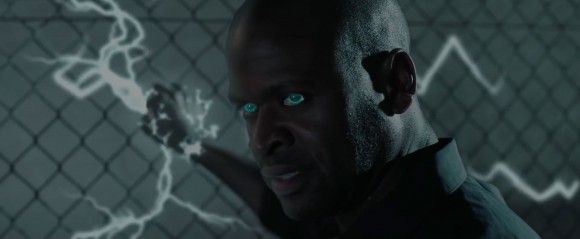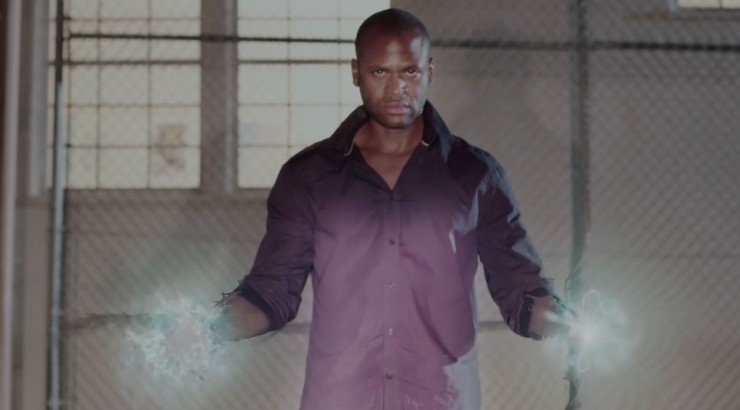Electrogenesis Is A Shockingly Good Fan Film Made By Dodge Students
September 14, 2015
It’s not every day that you watch a great fan film about a super hero you really like. And it’s definitely not every day that said film comes from a group of talented students from the place you work. But that was definitely the case when I watched
Electrogenesis
, a short film about Static Shock, over the summer.
For those of you not up on super heroes, Static Shock (or Static, as he is known these days), is better known as Virgil Hawkins, from DC Comics, where he was once a member of the Teen Titans and the Justice League. From 2000 until 2004, he was also the star of a fantastic cartoon series on The WB, which followed him through his teenage years.
The film in question, however, follows Virgil Hawkins at a time where he is not Static. It’s the time just after being just a normal teenager, but before coming a leader within the Justice League. It’s a journey of a man who has forgotten his destiny, to his revival as the hero he was always meant to be.
The film came about when writer Leon Langford (MFA/Screenwriting ’15) and director Harjus Singh (MFA/Directing ’16) were watching a preview for
The Flash
on CW, which prompted a conversation about Langford’s theory on Static Shock.
“We both agreed that there was a long time period in Static’s life that the comics or show never explored, but we had some ideas of what might have happened, so we wanted to tell that story,” Langford said.
The two worked out an outline, and began drafting the story. By the time they got to draft 7 was when Gabrielle Shepard (MFA/Film and Television Producing ’16) came aboard when she was assigned to it for the coming semester. The three hit it off when they realized what a love for the character they all shared, and just knew it was going to work out well.
“Everyone else’s story was good, but they weren’t super hero good. You don’t make super hero movies in film school, especially about a character that I watched as a kid, so I was drawn to it,” Shepard said.
When asked what drew them all toward the character to begin with, Langford said “It was more than your average Saturday morning cartoon show. It had lots of heavy topics, like interracial dating, school shootings, and more. It still resonates with people today.”
“And the villains were gang bangers, and real people, not just super villains,” Shepard added. “These were real issues, and the super hero on TV was going through them, just like us.”
Back to the film, Singh really wanted to fill in the gaps during the empty period of the character.
“In one episode of the show, he interacts with a slightly older version of himself, but how he got there was never explained,” Singh said. “It was interesting for me because a super hero has 2 transitory stages; the teen, where it coincides with puberty and coming of age, and the two, where they commit to whatever they want to do with their lives, whether to being a super hero or to be normal. But there was so much more to the story to tell. He is written in such a way that he’s not just about powers, but wants a normal life. And I wanted to see how that transition happened.”
Before the film even went into production, Langford went over the script with Professor Jeff Phillips, who helped him hone it down even more.
“He took the script, stripped Static of all his powers, and asked ‘Does he work as a human being in the end?’ And that really helped me see who Static was as a person,” Langford said.
“The funny thing was, at the time, Professor Phillips had no idea it was a super hero script!” Singh said. “I accidently forced Langford into telling him, but when he found out, he was very supportive.”
Professor Phillips went to bat for them, though, and helped them get it approved to get it made.
“Professor Phillips saw the potential in it before anyone else did. Professor Dave Kost was very supportive as well,” said Shepard.

Though the group was initially concerned about copyright infringement, DC Comics was open with them about fan films, and gave them their blessing.
“There were a lot of people in our corner, both at the school and at DC Comics, that helped make it happen,” Shepard said.
When
Electrogenesis
was completed, and put online in May 2015, it exploded on the Internet, taking them all by surprise.
“I honestly thought it would go one of two ways; it would fade into the wind with 7 views, or it would explode. Thankfully, it was the latter,” Langford said. “It’s satisfying, and I think it shows we understood the characters, and we took a risk.”
“I didn’t think anyone would remember the character, but I’m glad they did!” Singh said.
They all agreed that they lucked out on finding people who knew the character and had a connection to him. It was rare that all of them knew the material so well.
“I had a concept for what I wanted, and I was lucky to find Langford to help bring it to life,” Singh said. “And Shepard produced the hell out of it also. I don’t think anyone else could have produced it, let alone so closely to the material. It’s one thing to just get it done, another to be writing or producing and have a connection to the story.”
“To me, a fan film is the highest form of wanting to participate in the art,” Langford said.
“Static affected me growing up, and I wanted to pay tribute to that in some way,” Singh said. “Luckily, I had the means and character to do so. The ability to be able to pull out an emotion and connect with another human being is magic to me. And that is what movies are to me. It’s a privilege to do that.”


